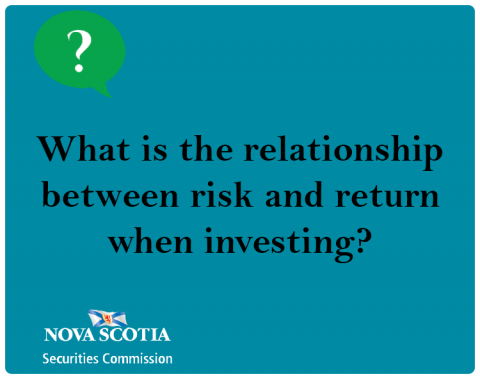Submitted by nsscadmin on

We’ve discussed risk several times in previous posts, including our in-depth series on the different types of risk investors can face.
Before we look closer at the relationship between risk and return, we want to state again as we have many times before, all investments have risk. This could be low or extremely high risk, but when you’re investing, some type and level of risk is always in-play.
When it comes to risk and return the main thing to remember is that the potential of larger returns always comes with more risk. If you remember just one thing from this post, we hope it’s that it will help you make better investment decisions and could possibly help you avoid frauds and scams.
Another key thing to remember is the word potential in the phrase, ‘the potential of larger returns always comes with more risk’. We say ‘potential’ because taking on more risk does not guarantee larger returns. It could just as easily cause large losses. This is because you are taking on more risk.
One of the easiest ways to understand this is by using an example of two different investments with two different levels of risk. In the example we’ll be looking at an investment in guaranteed investment certificates (GICs) and an investment in equities.
Investing in GICs is considered to be a low-risk investment. If you invest in GICs with a reputable and registered financial institution there is very low risk that you will lose your investment. The word guaranteed is in the name of the investment after all. If you invest in GICs with a reputable and registered financial institution there is very low risk that you will lose your investment. However, with this low risk comes what is considered to be minimal returns. After a quick Google search, we found most GICs paid an annual interest rate of less than one percent. Your money is safe, but your return is low, again, due to the low risk.
Now let’s look at an investment in equities. In this type of investment, the risk level can vary from low to extremely high depending on what you are investing in. Equity prices can be extremely volatile, an extreme example being what happened to the stock market during the early days of the COVID-19 pandemic. A more specific example would be investing in the Canadian company Cineplex. Between 2012 and 2017 an investment in Cineplex more than doubled. However more recently, the pandemic did great harm to the cinema industry and over a week in March 2020 Cineplex declined in value by 35 percent. After two weeks that drop was nearly 66 percent. Taking on more risk in this situation originally led to high returns, but later, those high returns may have become significant losses.
When making any investment, no matter how low or high the risk level, be sure it fits your risk tolerance and your investment goals. Knowing how the relationship between risk and return, along with your time horizon, can help you make smarter more informed investment decisions.
